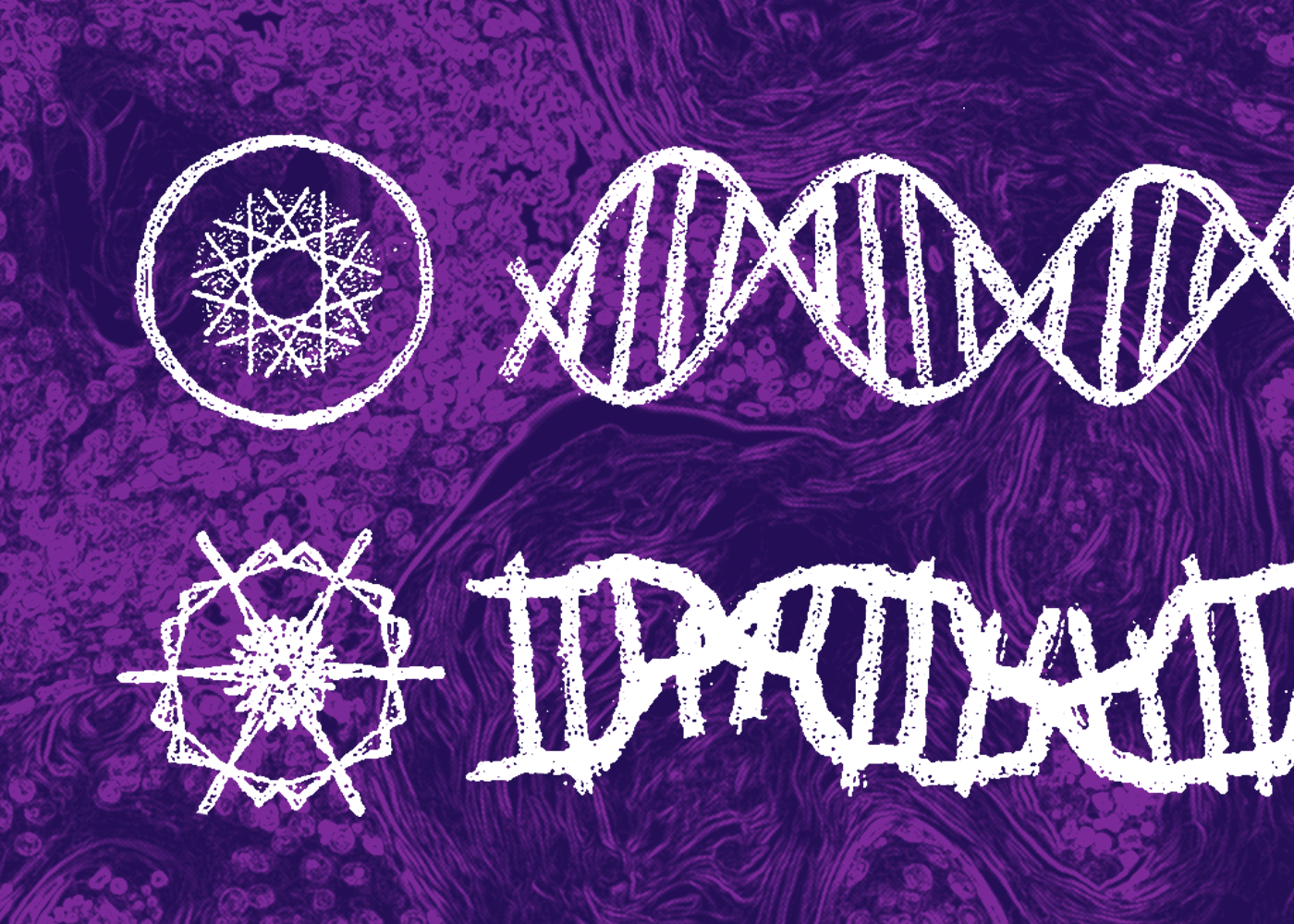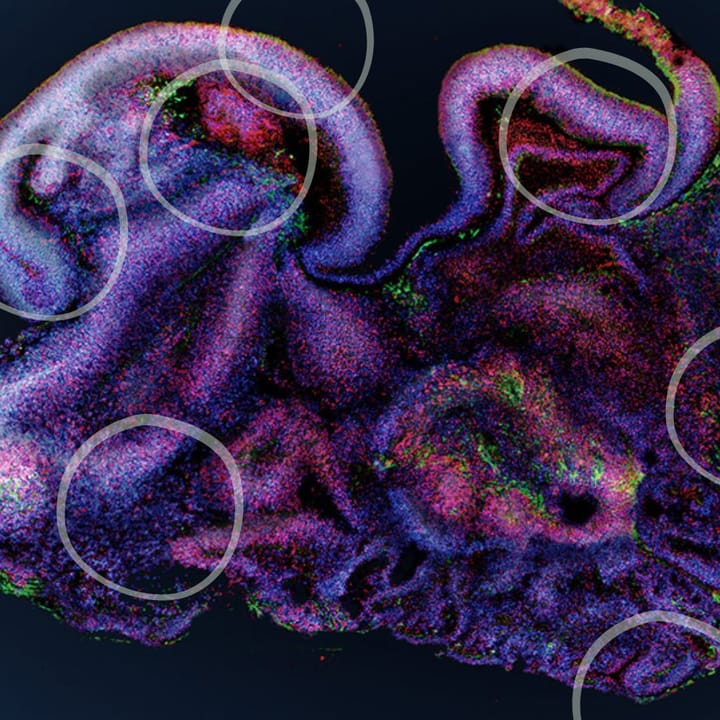Sensing of Z-nucleic acid by ZBP-1 constitutes an important line of innate immune defence, but could drugs targeting ZBP-1 signalling serve as a new and improved strategy for treating cancer? By Ziyue Kong.
A cell, the most basic component of any living organism (except viruses, of course), is one of the most unwelcoming environments one will ever find. The cell is like a paranoid person constantly searching for anything abnormal in and around its house. This recognition can be either from invaders such as bacteria or fungi, or from errors within a cell such as fractured chromosomes [1]. If the cell finds any of those, it will release numerous molecules as a signal to the immune system to help the cell tackle its problem (basically the cell yelling "help me!") [2]. This is called an innate immune response.
Among all signals, detection of abnormal genetic material in the form of pathogenic DNA and RNA is probably the most important inducer of an innate immune response [3]. Examining cellular sensors for pathogenic DNA has always been a hot topic in immunological research, most interesting and perplexing of which is the Z-DNA binding protein-1, ZBP-1, also known as DNA-dependent activator of IFN-regulatory factors (DAI).
Z-DNA is a form of DNA that has a left hand turn, unlike the normal, right hand turned DNA. Z-DNA is formed from special sequences in the cellular genome and its function may be related to regulation of gene expression. Z-DNAs are not actively present in cells but are considered highly antigenic, meaning that they may well be a target for the immune response [4].
ZBP-1 is primarily identified as a DNA sensor [5], with its ability to interact with Z-DNA being of subordinate importance. ZBP-1 will recognise viral DNAs present inside cells just like other endogenous nucleic acid sensors do, triggering similar immune responses [6]. However, its function has perplexed scientists ever since they found that removing ZBP-1 does not generally affect a cell's antiviral ability [7], with the exception towards a small proportion of viruses like influenza [8].
Interestingly, during the transcriptional activities of influenza, Z-DNA is formed due to occasional replication errors [9], which hints at the role of ZBP-1. ZBP-1 binds with viral Z-DNAs, activating enzymes which result in necroptotic cell death. Unlike apoptosis, which is the normal mode of cell death that seldom results in an immune response, necroptosis (the literal combination of necrosis, meaning "dead body", and apoptosis, meaning "falling down"), often results in the activation of an innate immune response [10]. Necroptosis induced by ZBP-1 also comes with adverse effects for the host. For example, some immune disorders are found to be related to the Z-DNA sensing ability of ZBP-1 [7], including the pathogenesis of COVID-19 [11].
Apart from sensing exogenous Z-DNAs, ZBP-1 also senses abnormal levels of Z-DNA produced by our own cells, resulting in necroptosis [12]. These cell death responses that cause innate immunity (i.e. immunogenic cell death) can be utilised in antitumour treatment. Traditional antitumour therapy like treatment with chemicals (chemotherapy) or radiation (radiotherapy) cause tumour cells to mostly undergo cell death via pathways that do not result in an immune response (i.e., non-immunogenic), thus limiting the effectiveness of antitumour treatments and sometimes even worsening the outcome of patients [13]. After all, tumour cells are more likely to become immunologically tolerated and therefore harder to eliminate if there are no signals for an immune response [14]. However, by applying chemicals and radiation in a certain way, scientists can cause tumour cells to die by means of attracting immune cells and activating innate antitumour immune responses [15]. Essentially, Z-DNA formation is induced by the application of certain chemicals in tumour cells [16], which signals ZBP-1 activation and an indirect mechanism of raising an immune response to kill the cell. Remarkably, this process has the potential to improve the effectiveness of tumour radiotherapy and chemotherapy.
Furthermore, a non-DNA binding function of ZBP-1 was discovered to induce cell death under high temperatures. Interestingly, this function of ZBP-1 is unrelated to its DNA sensing abilities. This suggests that ZBP-1 may have major roles in controlling cell fate even without binding Z-DNA, pointing towards new potential ways of controlling ZBP-1 (such as via protein aggregation) [17].
In sum, the discovery of ZBP-1 has shown great promise in revolutionising the next generation of cancer therapeutics. Although, scientists are still unclear about the precise mechanisms of ZBP-1 and how these vary in different contexts. Suggestions that they may play a role in DNA damage during the ageing process (cellular senescence) and contribute to age-related diseases alongside interacting with other Z-nucleic acids like Z-RNA are intriguing, but require further investigation. Ultimately, by developing techniques that enhance Z-nucleic acid sensing activity can be exploited to create more effective antiviral and anticancer drugs.
Bibliography
- Land, W. G. (2018) The Three Major Paradigms in Immunology. In Damage-Associated Molecular Patterns in Human Diseases: Volume 1: Injury-Induced Innate Immune Responses (Land, W. G., ed) pp. 13-27, Springer International Publishing, Cham
- Land, W. G. (2021) Role of DAMPs in respiratory virus-induced acute respiratory distress syndrome—with a preliminary reference to SARS-CoV-2 pneumonia. Genes & Immunity 22, 141-160
- Kawasaki, T., and Kawai, T. (2019) Discrimination Between Self and Non-Self-Nucleic Acids by the Innate Immune System. In International Review of Cell and Molecular Biology (Vanpouille-Box, C., and Galluzzi, L., eds) Vol. 344 pp. 1-30, Academic Press
- Sinden, R. R. (1994) Left-Handed Z-DNA. In DNA Structure and Function (Sinden, R. R., ed) pp. 179-216, Academic Press, San Diego
- Takaoka, A., Wang, Z., Choi, M. K., Yanai, H., Negishi, H., Ban, T., Lu, Y., Miyagishi, M., Kodama, T., Honda, K., Ohba, Y., and Taniguchi, T. (2007) DAI (DLM-1/ZBP1) is a cytosolic DNA sensor and an activator of innate immune response. Nature 448, 501-505
- Maelfait, J., Liverpool, L., Bridgeman, A., Ragan, K. B., Upton, J. W., and Rehwinkel, J. (2017) Sensing of viral and endogenous RNA by ZBP1/DAI induces necroptosis. The EMBO Journal 36, 2529-2543
- Tang, Q. (2022) Z-nucleic acids: Uncovering the functions from past to present. European Journal of Immunology 52, 1700-1711
- Thapa, R. J., Ingram, J. P., Ragan, K. B., Nogusa, S., Boyd, D. F., Benitez, A. A., Sridharan, H., Kosoff, R., Shubina, M., Landsteiner, V. J., Andrake, M., Vogel, P., Sigal, L. J., tenOever, B. R., Thomas, P. G., Upton, J. W., and Balachandran, S. (2016) DAI Senses Influenza A Virus Genomic RNA and Activates RIPK3-Dependent Cell Death. Cell Host & Microbe 20, 674-681
- Basavaraju, S., Mishra, S., Jindal, R., and Kesavardhana, S. (2022) Emerging Role of ZBP1 in Z-RNA Sensing, Influenza Virus-Induced Cell Death, and Pulmonary Inflammation. mBio 13, e00401-00422
- Moriwaki, K., and Chan, F. K. M. (2017) The Inflammatory Signal Adaptor RIPK3: Functions Beyond Necroptosis. In International Review of Cell and Molecular Biology (Galluzzi, L., ed) Vol. 328 pp. 253-275, Academic Press
- Karki, R., Lee, S., Mall, R., Pandian, N., Wang, Y., Sharma, B. R., Malireddi, R. K. S., Yang, D., Trifkovic, S., Steele, J. A., Connelly, J. P., Vishwanath, G., Sasikala, M., Reddy, D. N., Vogel, P., Pruett-Miller, S. M., Webby, R., Jonsson, C. B., and Kanneganti, T.-D. (2022) ZBP1-dependent inflammatory cell death, PANoptosis, and cytokine storm disrupt IFN therapeutic efficacy during coronavirus infection. Science Immunology 7, eabo6294
- Jiao, H., Wachsmuth, L., Kumari, S., Schwarzer, R., Lin, J., Eren, R. O., Fisher, A., Lane, R., Young, G. R., Kassiotis, G., Kaiser, W. J., and Pasparakis, M. (2020) Z-nucleic-acid sensing triggers ZBP1-dependent necroptosis and inflammation. Nature 580, 391-395
- Vandenabeele, P., Vandecasteele, K., Bachert, C., Krysko, O., and Krysko, D. V. (2016) Immunogenic Apoptotic Cell Death and Anticancer Immunity. In Apoptosis in Cancer Pathogenesis and Anti-cancer Therapy: New Perspectives and Opportunities (Gregory, C. D., ed) pp. 133-149, Springer International Publishing, Cham
- Fucikova, J., Kepp, O., Kasikova, L., Petroni, G., Yamazaki, T., Liu, P., Zhao, L., Spisek, R., Kroemer, G., and Galluzzi, L. (2020) Detection of immunogenic cell death and its relevance for cancer therapy. Cell Death & Disease 11, 1013
- Galluzzi, L., Buqué, A., Kepp, O., Zitvogel, L., and Kroemer, G. (2017) Immunogenic cell death in cancer and infectious disease. Nature Reviews Immunology 17, 97-111
- Herbert, A., and Balachandran, S. (2022) Z-DNA enhances immunotherapy by triggering death of inflammatory cancer-associated fibroblasts. Journal for ImmunoTherapy of Cancer 10, e00570417.
- Yuan, F., Cai, J., Wu, J., Tang, Y., Zhao, K., Liang, F., Li, F., Yang, X., He, Z., Billiar, T. R., Wang, H., Su, L., and Lu, B. (2022) Z-DNA binding protein 1 promotes heatstroke-induced cell death. Science 376, 609-615





